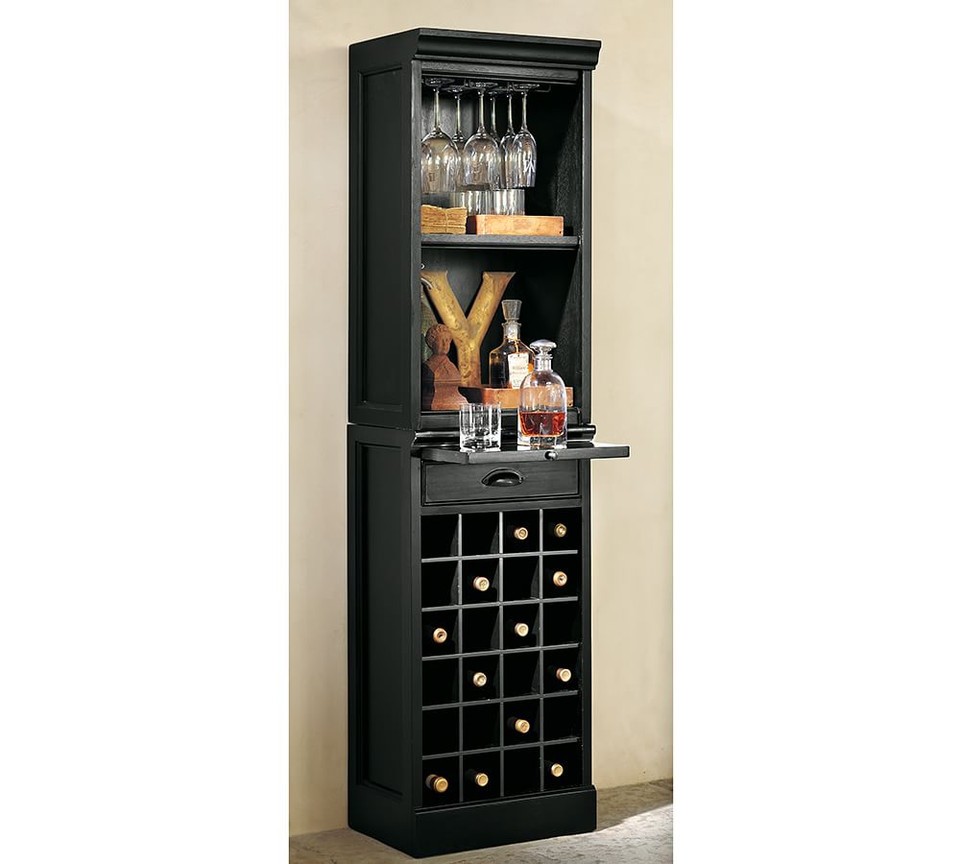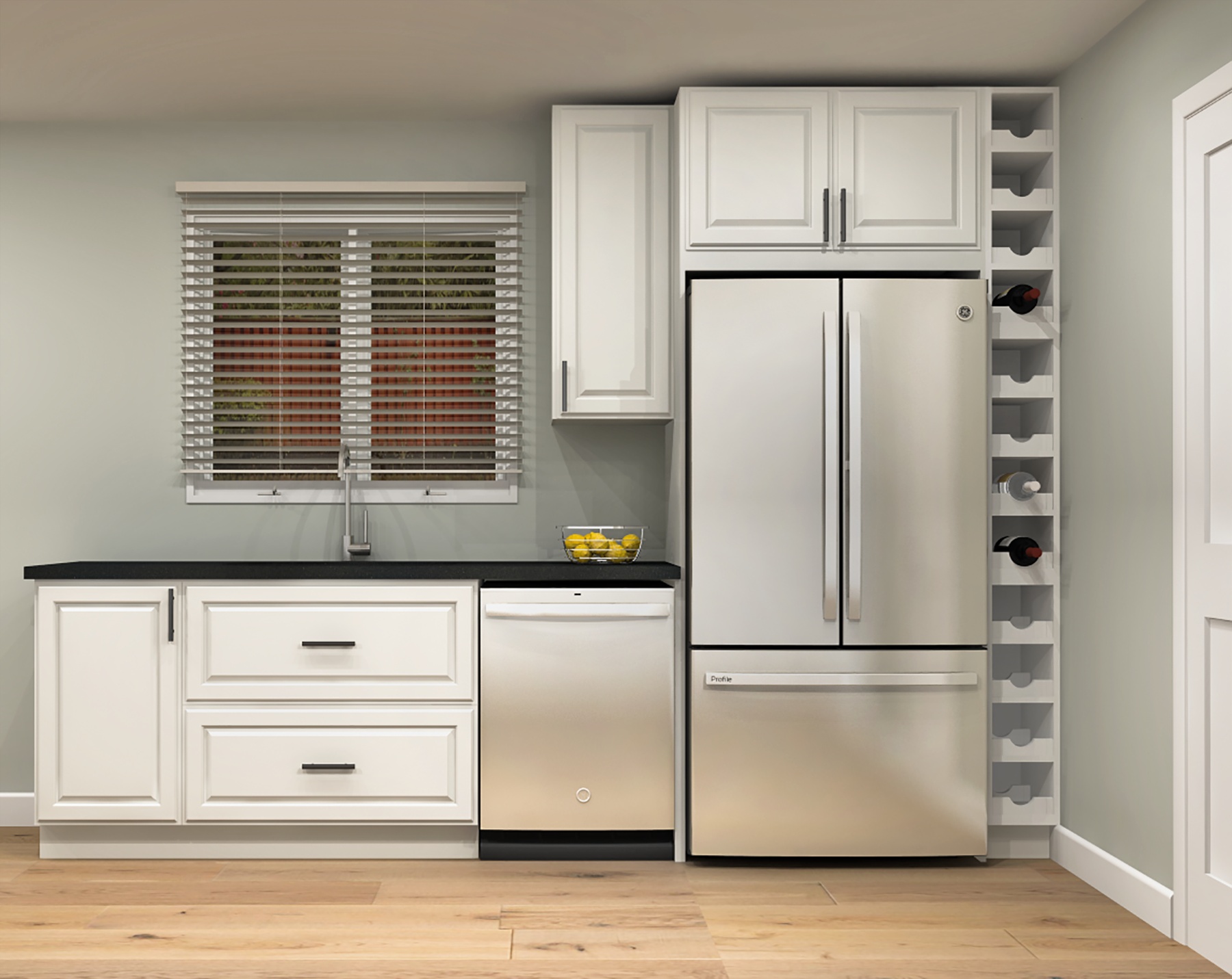Tall Narrow Wine Cabinet Design Considerations

A tall narrow wine cabinet is an excellent option for storing your wine collection if you have limited floor space. These cabinets offer a variety of advantages and disadvantages, and the best choice for you will depend on your individual needs and preferences.
Advantages and Disadvantages of Tall Narrow Wine Cabinets
Tall narrow wine cabinets offer several advantages over wider cabinets. They are ideal for small spaces and can hold a significant amount of wine in a compact footprint. They are also generally more affordable than wider cabinets, and can be easily moved if needed. However, they can be difficult to access, especially for those who are shorter or have limited mobility. Additionally, tall narrow wine cabinets may not be as aesthetically pleasing as wider cabinets.
Space Considerations
It is crucial to consider the available space and the desired storage capacity when choosing a tall narrow wine cabinet. You should measure the space where you plan to place the cabinet and ensure that it will fit comfortably. Consider the height of the ceiling and the depth of the cabinet. Additionally, consider the number of bottles you plan to store and choose a cabinet with enough capacity to meet your needs.
Common Design Features
Tall narrow wine cabinets come in a variety of styles and designs. Here are some common design features:
Materials
- Wood: Wood is a popular material for wine cabinets, as it is durable, attractive, and can be stained or painted to match your décor. Common wood choices include oak, maple, and cherry.
- Metal: Metal cabinets are often more affordable than wood cabinets and can be very durable. However, they may not be as aesthetically pleasing as wood cabinets.
- Glass: Glass cabinets are a good choice if you want to display your wine collection. However, they are more fragile than wood or metal cabinets.
Finishes
- Stained: Stained finishes enhance the natural beauty of wood and can be customized to match your décor.
- Painted: Painted finishes can be used to create a more modern or contemporary look.
- Polished: Polished metal finishes are sleek and modern, but can be more prone to scratches.
Storage Options
- Shelves: Shelves are the most common storage option for wine cabinets. They can be made of wood, metal, or glass.
- Drawers: Drawers can be used to store smaller items, such as wine accessories.
- Wine racks: Wine racks are designed to hold wine bottles securely. They can be made of wood, metal, or acrylic.
Tall Narrow Wine Cabinet Functionality and Features

A tall narrow wine cabinet is designed to provide optimal storage conditions for your wine collection. Beyond its sleek and space-saving design, it boasts a range of functionalities and features that ensure the preservation and enhancement of your precious vintages.
Temperature and Humidity Control
Maintaining a consistent temperature and humidity level is crucial for wine preservation. A tall narrow wine cabinet often includes advanced temperature control systems that allow you to set the ideal temperature for your wines. Typically, the recommended temperature range for red wines is between 55°F and 65°F, while white and sparkling wines are best stored between 45°F and 55°F. Humidity control is also vital, as it prevents the wine corks from drying out, which can lead to oxidation and spoilage.
Storage Mechanisms
Tall narrow wine cabinets offer various storage mechanisms to accommodate different wine bottle sizes and shapes.
Shelves
Shelves are the most common storage mechanism in wine cabinets. They provide a simple and efficient way to store bottles horizontally, ensuring the cork stays moist and the wine remains in contact with it. Some shelves are adjustable, allowing you to customize the storage space based on your collection.
Racks
Racks are another popular option, often designed to hold multiple bottles in a compact space. They can be made from various materials, such as wood, metal, or acrylic. Some racks feature a tiered design, allowing for efficient use of vertical space.
Drawers
Drawers are particularly useful for storing larger bottles or for showcasing special bottles. They can also provide an extra layer of security and protection against dust and light.
Additional Features
Beyond temperature and humidity control and storage mechanisms, tall narrow wine cabinets may include additional features that enhance functionality and user experience.
LED Lighting
LED lighting is commonly incorporated into wine cabinets to illuminate the interior and showcase your collection. LEDs are energy-efficient, produce minimal heat, and provide a soft, warm light that does not damage the wine.
Vibration-Dampening Technology
Vibration can negatively affect the aging process of wine, potentially leading to sediment formation and flavor alteration. Some wine cabinets incorporate vibration-dampening technology to minimize the impact of vibrations from external sources.
Integrated Wine Bottle Labels
Integrated wine bottle labels can help you keep track of your collection and identify bottles easily. These labels may include information such as the vintage, grape variety, and region.
Tall Narrow Wine Cabinet Installation and Maintenance

Installing and maintaining a tall narrow wine cabinet is essential for ensuring optimal wine storage conditions. Proper installation ensures the cabinet functions correctly, while regular maintenance guarantees the longevity and performance of your wine collection.
Installation Considerations, Tall narrow wine cabinet
Before installing your tall narrow wine cabinet, it is crucial to carefully consider the following aspects:
- Location Selection: Choose a location that is cool, dry, and away from direct sunlight or heat sources. Avoid areas with high humidity or extreme temperature fluctuations. Ideally, the room temperature should be between 55°F and 65°F (13°C and 18°C).
- Ventilation: Adequate ventilation is crucial for maintaining optimal temperature and humidity levels. Ensure sufficient air circulation around the cabinet by leaving a few inches of space on all sides.
- Electrical Wiring: Verify that the electrical outlet you plan to use is compatible with the cabinet’s power requirements. Ensure the outlet is grounded and can handle the load. Consider hiring a qualified electrician to check and ensure safety.
- Leveling: Leveling the cabinet is essential for ensuring proper door closure and optimal performance. Use a level to adjust the cabinet’s feet until it is perfectly level. This ensures that the cooling system functions efficiently and that the wine bottles are stored correctly.
Installation Steps
The installation process for a tall narrow wine cabinet typically involves the following steps:
- Unpack the Cabinet: Carefully remove the cabinet from its packaging and inspect it for any damage.
- Position the Cabinet: Place the cabinet in the chosen location, ensuring it is level and in a stable position.
- Connect to Power: Plug the cabinet into a compatible electrical outlet and ensure it is properly grounded.
- Set the Temperature: Adjust the cabinet’s temperature control to the desired setting, typically between 55°F and 65°F (13°C and 18°C).
- Allow Time to Cool: Let the cabinet run for several hours before adding any wine. This allows the internal temperature to stabilize and reach the set point.
Maintenance Practices
Maintaining your tall narrow wine cabinet is crucial for its longevity and performance. The following practices are recommended:
- Regular Cleaning: Clean the cabinet’s interior and exterior regularly to prevent dust and debris buildup. Use a damp cloth and mild detergent for cleaning. Avoid harsh chemicals or abrasive cleaners that can damage the cabinet’s finish.
- Temperature Calibration: Periodically check the cabinet’s temperature using a thermometer to ensure it maintains the desired setting. Adjust the temperature control as needed.
- Filter Replacement: Some wine cabinets have air filters that need to be replaced periodically. Consult the manufacturer’s instructions for the recommended replacement schedule.
Wine Storage Optimization
Optimizing wine storage within a tall narrow wine cabinet is essential for preserving the quality of your collection. Consider the following tips:
- Organization: Organize your wine collection by type, vintage, or any other preferred method. Use shelves, racks, or dividers to create distinct storage areas. This makes it easier to locate specific bottles and manage your inventory.
- Labeling: Label each bottle with its name, vintage, and any other relevant information. This allows you to quickly identify and track your wine collection. Consider using a wine labeling system or software for efficient inventory management.
- Rotation: Rotate your wine collection regularly to ensure that all bottles are exposed to consistent temperature and humidity levels. This prevents bottles from being stored in the same position for extended periods, which can affect their quality.
Tall narrow wine cabinet – A tall, narrow wine cabinet, like a slender pillar of oak, can stand sentinel over your collection. It offers a sense of order and elegance, but perhaps you desire something more rustic, a touch of the vineyard itself. For a truly unique storage solution, consider a wine barrel wine cabinet , a vessel of history and character that embodies the spirit of the vine.
Whether you choose a stately cabinet or a weathered barrel, your wine collection will be cherished and enjoyed, a testament to your discerning taste.
A tall, narrow wine cabinet can be a beautiful and functional addition to any home. The dark elegance of a black cabinet wood top adds a touch of sophistication, while the vertical design maximizes space. Like a well-curated collection of wines, this piece can be a testament to the finer things in life, reminding us to savor each moment and appreciate the beauty in simplicity.
